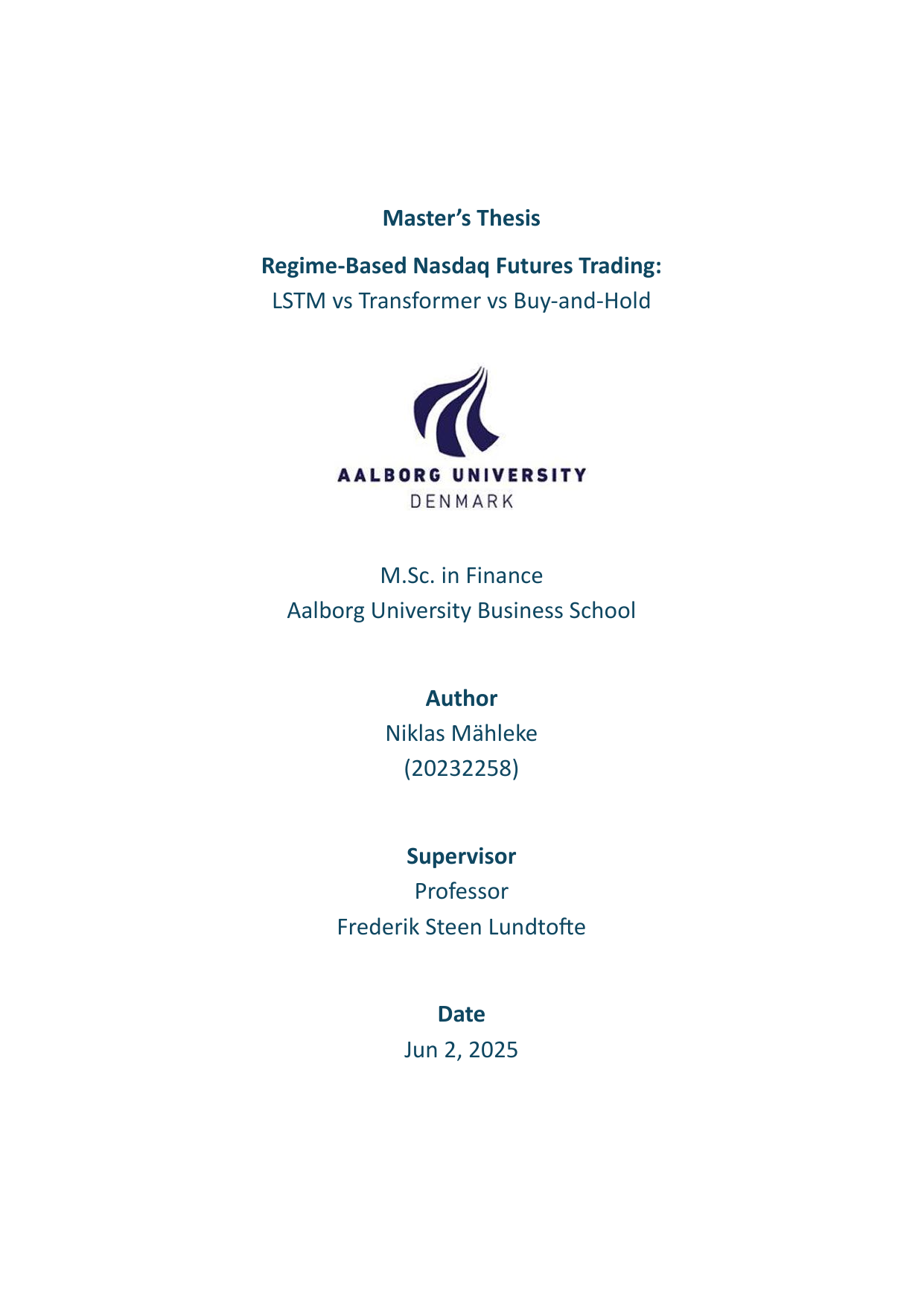
Regime-Based Nasdaq Futures Trading: LSTM vs Transformer vs Buy-and-Hold
Author
Term
4. semester
Publication year
2025
Submitted on
2025-06-02
Pages
62
Abstract
Short-term traders and risk managers often do not have dependable tools for making decisions every minute, because traditional time-series methods can break down when liquidity and volatility change quickly. I show that trading only when clear “bull,” “bear,” or “sideway” regimes are detected captures most of the value in high-frequency trading. I labeled one-minute NASDAQ futures bars from January 2015 to Jun 2024 as “bull,” “bear,” or “sideway”, and trained two deep-learning models to predict these labels. An LSTM (Long Short-Term Memory) is a neural network that learns to remember or forget information over time - useful when both recent and slightly older price patterns matter. A Transformer is another neural network design that uses an attention mechanism to identify which past data points are most relevant for each new prediction. In out-of-sample tests on July-December 2024 data, both models spotted real regime shifts within ten minutes on average and outperformed a simple buy-and-hold strategy. However, their higher returns came with larger swings, meaning these signals carry more risk. This work provides a minute-level deep-learning framework showing that LSTM and Transformer signals can beat buy-and-hold - if you accept bigger ups and downs.
Documents
